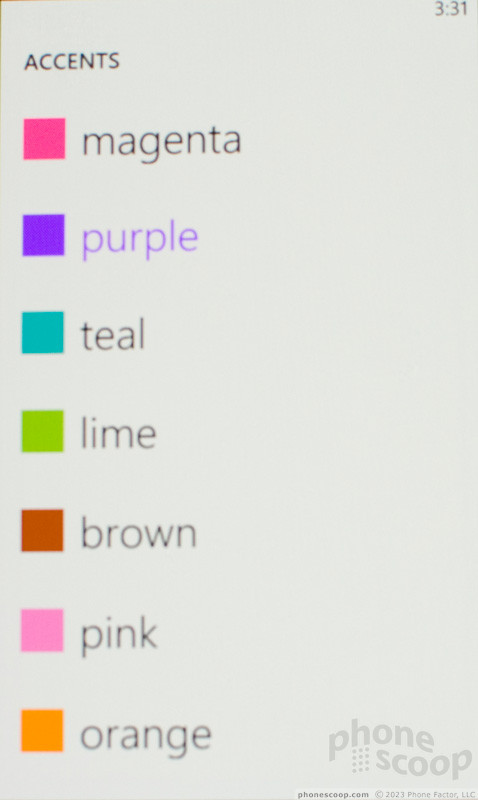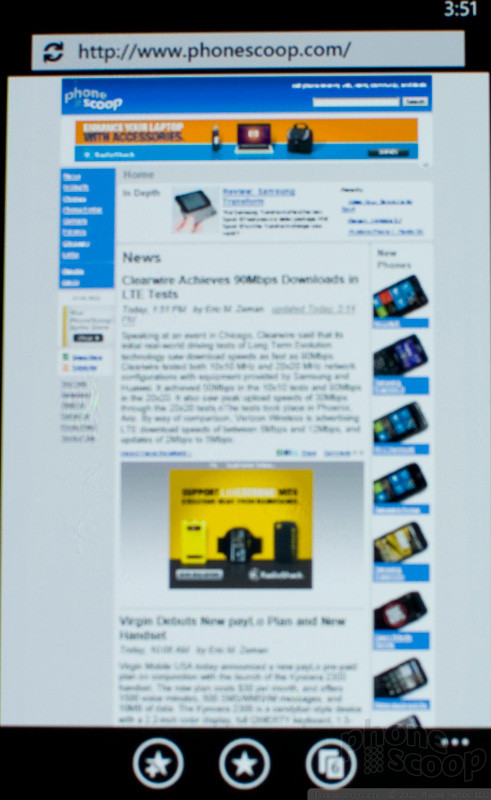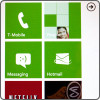Review: Samsung Focus with Windows Phone 7
Browse
The Web browser on the Samsung Focus is a solid, modern browser, but it isn't up to par with the best mobile browsers on the market, like Safari on the iPhone or the Android browser. Most Web pages came through looking perfect. Our own PhoneScoop homepage looked exactly like it does on a desktop browser. But the phone had trouble with other pages. Google Reader, for instance, offers a great, touch friendly page for mobile phones, but the Internet Explorer browser on the Samsung Focus had trouble with the various open frames and scroll bars required to make Reader work properly. It wasn't a serious problem, but it could get in the way from time to time.
I was happy to find that all the sites I visited treated Internet Explorer on Windows Phone 7 like a full desktop browser. Both CNN and the New York Times homepage offered their full desktop version without dumping me into the mobile page first. Navigating pages is very snappy. Web pages first appear fitted to the Focus' screen, so you can see the entire page at once, then double tap on a section, and the phone zooms in quickly to that frame, fitting the text perfectly to the screen. You can also search on pages for specific text, or pin a Web page to the Start screen as a tile so that you can jump back to it later. This is in addition to the standard bookmarks and history options.
The only thing missing is Flash support. There are still gaping holes on Web pages. Microsoft recently released a rudimentary YouTube app for Windows Phone 7. In fact, the so-called app is really a link to the mobile YouTube Web site, with supporting software to let the Focus play YouTube videos. So, you can click on a YouTube link to watch videos, but you can't upload your own movies.
(My original review stated that YouTube support was not available at press time. I have updated the preceding paragraph to reflect the new 'app' in the Marketplace)
Customize

Most of the customizations you can perform on Windows Phone 7 take place on the Start menu, which you can rearrange to your heart's content. You can remove anything from that menu, even the Phone or People hubs. You can also add Web pages, contacts, maps and other features to the live tiles, and developers will have some control over how tiles work and what they offer.
Windows Phone 7 also offers some elegant theme and color options. You can't change the basic design, but you can change the colors. Microsoft offers a limited color palette for the tiles and other interface elements, and you can choose either a black background or a light greyish-white backing.
Beyond that, there are few customization options. You get limited control over notification sounds for alerts; only a few are available on the phone. There are no sound profiles to switch from settings for an office environment to settings for home (or the movie theater, or the car, etc.). You can't customize the autocorrect dictionary on the phone, which would be nice for businesses with a lot of jargon and terminology. Windows Mobile 6.x users will be especially disappointed by the lack of extensive customization options to which they grew accustomed.





 Windows Phone 7: Hands-On
Windows Phone 7: Hands-On
 Samsung Focus
Samsung Focus









